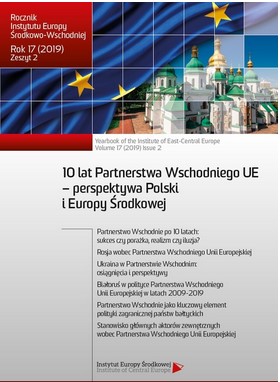Zróżnicowanie formalnych podstaw współpracy gospodarczej Unii Europejskiej z państwami Partnerstwa Wschodniego a wzajemna wymiana handlowa
Diversification of the Formal Basis of the European Union’s Economic Cooperation with the Eastern Partnership Countries and Mutual Trade Exchange
Author(s): Hanna DumałaSubject(s): Diplomatic history, Economic history, Political history, Economic policy, International relations/trade, Political economy, Transformation Period (1990 - 2010), Present Times (2010 - today), EU-Accession / EU-DEvelopment
Published by: Instytut Europy Środkowej
Keywords: foreign trade; Eastern Partnership; partnership and cooperation agreement; European Union; association agreement;
Summary/Abstract: The economic relations of the European Union (EU) with the Eastern Partnership (EaP) countries are diverse in terms of their formal basis, scope and size. All EaP countries were already covered by the Generalised System of Preferences (GSP) in 1993/1994 and some by the additional GSP+ scheme in 2005, and bilateral Partnership and Cooperation Agreements (with the exception of Belarus) in 1998–1999, replaced in 2016–2018 by an Association Agreement with a DCFTA for Georgia, Moldova and Ukraine, and in Armenia by a comprehensive and strengthened Partnership Agreement. However, the analysis of trade flows between 2007 and 2017 did not reveal a clear link between the volume of trade and the type of agreement governing economic relations. Although for most Eastern Partnership countries, the EU is the most important export market (except for Belarus) and the most important supplier (except for Armenia and Belarus), for the EU as a whole, the EaP countries remain second and third tier partners.
Journal: Rocznik Instytutu Europy Środkowo-Wschodniej
- Issue Year: 17/2019
- Issue No: 2
- Page Range: 171-195
- Page Count: 25
- Language: Polish

